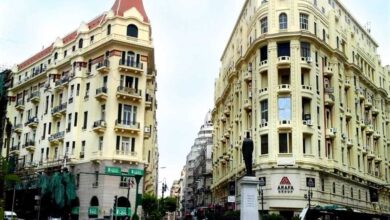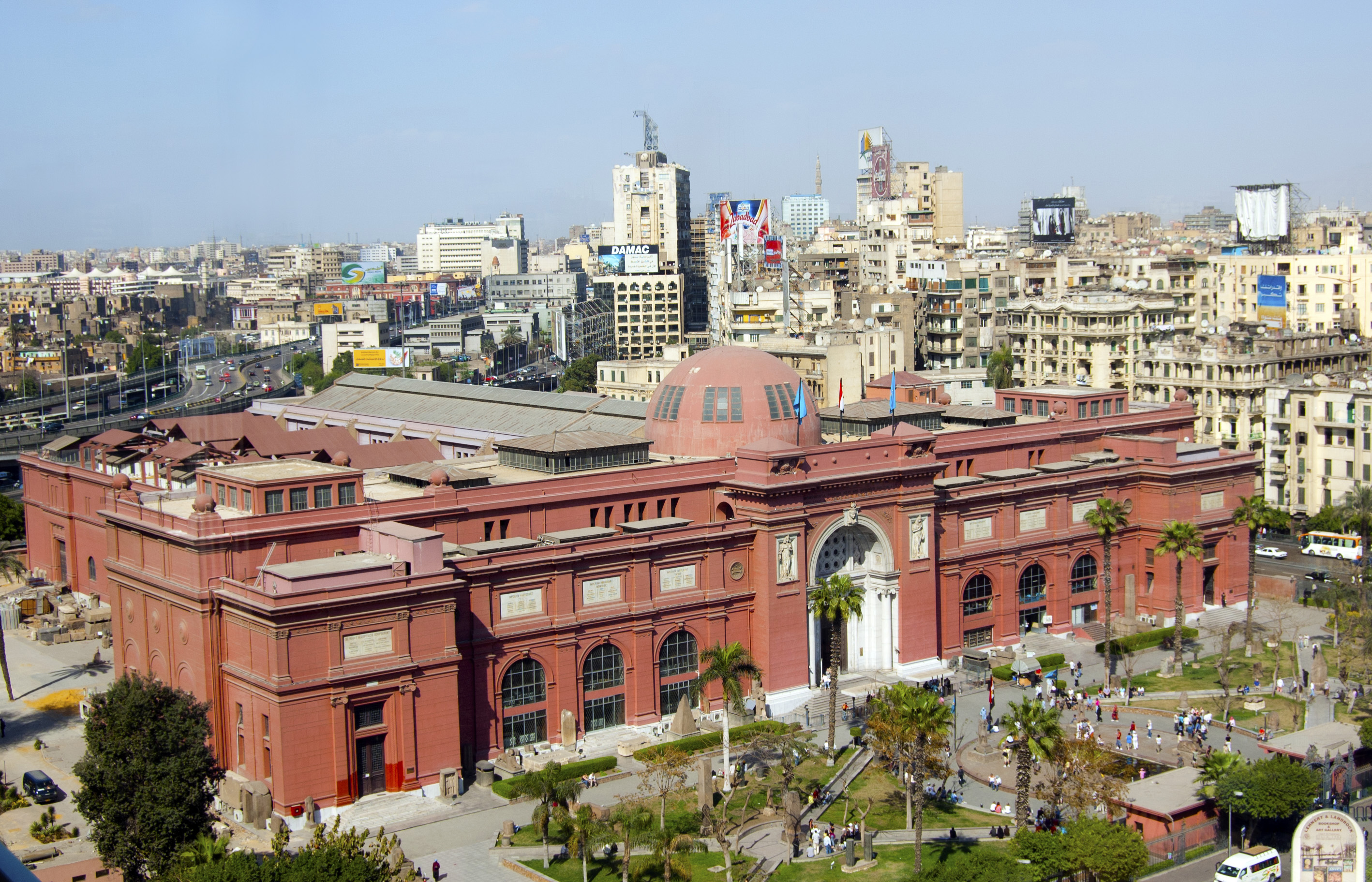From its onset, the 25 January revolution has been marked by obsessive documentation. With a multitude of multimedia material came a marked effort to collect and preserve records of the ongoing struggle for change, from state institutions like the National Archives to the newly formed activist media collective, Mosireen.
Founding member, actor and activist Khalid Abdalla, describes Mosireen as an organization devoted to supporting and promoting “civic media.” Along with a loose collection of artists, filmmakers, and activists, Mosireen is putting their archive of raw documentary footage to work with Tahrir Cinema.
Tahrir Cinema should not be confused with the commercial movie theater, Cinema al-Tahrir, which lies a few blocks down on Tahrir Street. Set up in front of the Mugamma building overlooking the square, a screening program of video footage and clips collected from 25 January until now has been taking place over the past week and runs every night at 10:30pm. More than a simple morale booster, it is an opportunity for the people in Tahrir to be a part of how their own story is told. The screening program shows how archiving has become an active agent in the movement for change.
“One of the hallmarks of this revolution is that it has been filmed by its people,” Abdalla told Al-Masry Al-Youm, during a break from his activities in the square.
“Part of the whole initiative is a feeling of possession. There is a big difference between watching TV and seeing something that has been filmed by someone just like you.”
This sense of possession was clear at a recent screening at Tahrir Cinema. Throughout the screening, came moments of personal recognition, when one audience member would whisper to a neighbor or yell to the whole crowd, “I was there.”
Watching the films, the crowd responded in turns with laughter, cheers, and gasps of anger. The atmosphere was one of a group, remembering and reliving a shared experience.
“It brings us back to the memory of the revolution,” said audience member Osama Ahmed. “Now I have the same feeling I had on 28 January.”
That feeling is the same one that provided the spark for Mosireen, which Abdalla started along with fellow filmmakers Lobna Darwish, Aida al-Kashef, and Tamer al-Said, as an off-shoot of the independent film production company Zero Productions in early March. All members were active participants in ongoing protests and continuously documented the events as they happened.
“We were all living in the media tent in the square,” said Abdalla.
When focus shifted from daily protests, the group saw a need for space and equipment to work – not just for themselves, but for others – to continue the burst of production that took place during the 18 days. They set up shop Downtown, with a few laptops and editing equipment made available to the public on a sliding pay scale.
Tahrir Cinema is a natural extension of the Mosireen project, which seeks to facilitate collective recording and framing of history.
Set-up on a main thoroughfare to the square, films are shown on a modest screen constructed of wood and plastic, with rugs laid out on the ground for the audience to sit; a larger standing crowd huddles to watch around the outskirts.
The screenings are conversations, during which commentary is welcome. When a clip from the morning of 10 April showed young men displaying the bullet casings they found on the ground after the military cleared the square the night before, one spectator was prompted to stand up and tell his parallel story. Displaying his own bullet casings, he took the microphone and delivered a speech, which included a particularly cutting metaphor for the project’s theme: the revolution is not over.
“Egypt now is like a man and his wife,” the audience member said, “She knows her husband is cheating on her, but she is staying quiet because she wants to raise the kids.”
The screenings consist of collections of clips, brought together to tell a particular story, to shed light on a forgotten night in the square, or to point out small moments of idiosyncratic creativity, anger, and humor during the protests. Abdalla curated the first week of programming with footage from the Mosireen archive, but in the second week of the sit-in various people are taking over, presenting a wider variety of video clips and perspectives.
Artist Lara Baladi assembled a program, presenting a collection of footage culled mostly from YouTube, filmed in Cairo and elsewhere in Egypt. The footage covered events from January all the way through to recent weeks, and was peppered with activist home videos, and other fragments of the story of an uprising that extends far beyond Tahrir. It even included documentary footage of solidarity protests in London.
Baladi highlighted animated videos from the Kharabeesh website, showing interactions between Arab dictators and their people. In one short, deposed Tunisian President Zine al-Abidine Ben Ali sits on an airplane, an oversized photographed head on an animated body with stringy arms and legs, seeking asylum from various nations. Upon calling Mubarak, he receives the response "Stay where? You have caused me trouble with my people!"
The footage was activated by its setting as it drew a large crowd of passersby and committed viewers.
But perhaps more important to the organizers and members of the sit-in is the way media has been covering the ongoing sit-in in Tahrir Square. Mohamed Abdel Aziz, who has been staying at the square over the past week, told Al-Masry Al-Youm, "People from state TV misrepresent us." Tahrir Cinema is one way for those at the square to actively present their side of the story, both to each other and to passersby.
Tahrir Cinema is set to continue for as long as the sit-in persists.




